Shocking Victorian killings: Daniel Valerio, Sheree Beasly and Sharpe Family murders
FULL MAP: These horrific killings not only rocked the Mornington Peninsula but outraged all Victorians.
Melbourne City
Don't miss out on the headlines from Melbourne City. Followed categories will be added to My News.
They’re the locations that send a chill down the spine of every Victorian.
The places where when you walk or drive past, you can’t help but remember the horror that transpired.
It may be Hoddle St, or the Westgate Bridge, or the Bourke St Mall or a random, remote dam in Winchelsea.
They are Victoria’s scars — the places that remind us of the pain of the past.
Leader reporters are revisiting these locations, telling their stories and providing readers with an interactive map to navigate — and each Monday we will update the map, adding new locations and revisiting these otherwise ordinary locations with grisly histories.
Scroll the interactive map to learn more about where these tragic events unfolded.
Last week we revisited the brave emergency services workers who lost their life in the line of duty.
This week we sadly look back at the senseless killings which outraged Victorians.
DANIEL VALERIO DEATH
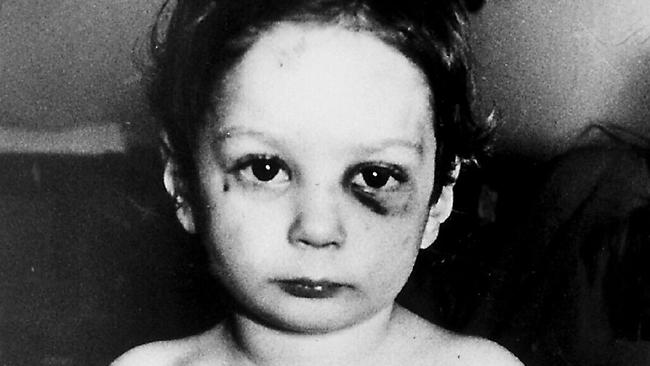
Images of the bruised little face of defenceless toddler Daniel Valerio are impossible to forget.
The two-year-old Rosebud West boy was savagely beaten and tortured for months by his stepfather Paul Leslie Aiton.
Aiton eventually killed Daniel in 1990 because he wouldn’t stop crying.
His death led to the introduction of mandatory reporting laws that required health workers, doctors, maternal nurses, midwives, teachers, principals and police to make reports to child protective services if they formed a reasonable belief that a child was being physically or sexually abused.
Justice Philip Cummins, who sentenced Aiton to a 22-year term, observed: “Daniel would be alive today if there had been mandatory reporting.’’
Aiton was paroled in 2011 after serving a minimum 18 years of a 22-year sentence for the brutal murder.
The Baillieu government had opposed Aiton’s release but could not reverse a decision by the Adult Parole Board.
SHEREE BEASLEY TRAGEDY

Zipping along a quiet Rosebud street on her pink bike Sheree Beasley stood no chance against the evil intentions of paedophile Robert Arthur Selby Lowe.
The salesman and avid churchgoer snatched the little girl from the street in 1991 and bundled her into his car.
He sexually assaulted his victim and dumped her dead body in a concrete drain along Mornington-Flinders Rd, Red Hill
It was four months before her decomposing corpse was found.
“I would give my life to have her back,” her anguished mother, Kerri Greenhill, said at the time. “Take me instead … she was only six.”
Lowe was sentenced to life with no chance of parole.
“Her final resting place was a cold concrete cylindrical drain, 30cm wide,” Supreme Court judge Justice Philip Cummins said.
“What you did was every child’s fear and every parent’s nightmare … You wove a tangled web around yourself which eventually captured you.”
Sheree’s memory was honoured with a 2015 vigil at her grave at the Mornington Cemetery in Mt Martha.
THE SHARPE FAMILY MURDERS
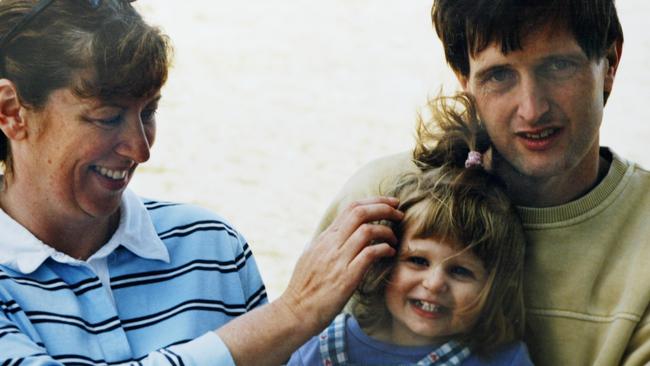
On April 23, 2004 John Sharpe used a speargun to kill his pregnant wife Anna Kemp, 41, as she slept.
He buried her in a shallow grave in the backyard of the Prince St home the family shared at Mornington.
Four days later he used the same weapon to murder his 20-month-old daughter Gracie, killing her only to help perpetuate his story that his wife had left him for another man and taken their child with her.
Sharpe then exhumed Anna’s body, dismembered it with a chainsaw and dumped her and Gracie at a local tip.
If those vile crimes weren’t shocking enough Sharpe then shed crocodile tears while making public pleas for help to find his family.
Investigators later discovered he had used his wife’s ATM card at a bank in the southeastern suburbs and sent bogus emails to her mother in New Zealand to maintain the facade she was alive.
Several months later Sharpe was arrested and sentenced to two consecutive terms of life imprisonment.
THE SILK-MILLER MURDERS
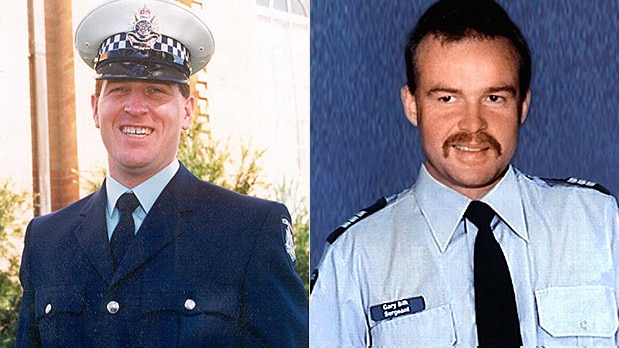
Victoria Police officers Sergeant Gary Silk and Senior Constable Rodney Miller were murdered in Cochranes Road, Moorabbin on August 16, 1998.
The officers were staking out the Silky Emperor Restaurant when they were gunned down at close range near midnight.
The pair had been working in Operation Hamada, an investigation into a series of armed robberies committed at multiple restaurants.
Silk and Miller had pulled over a car when they were shot and killed by a gunman.
Victoria police formed ‘Operation Lorimer’ to hunt down the killer.
The wide-ranging investigation included evidence gathered from the South Korea Hyundai factory.
Known criminal Debs was arrested in September 2001, more than three years after the killings.
Debs was found guilty of the murders in February 2003 and sentenced to life-imprisonment.
A second man was acquitted of murder after a 2022 retrial.
WALSH STREET MURDERS
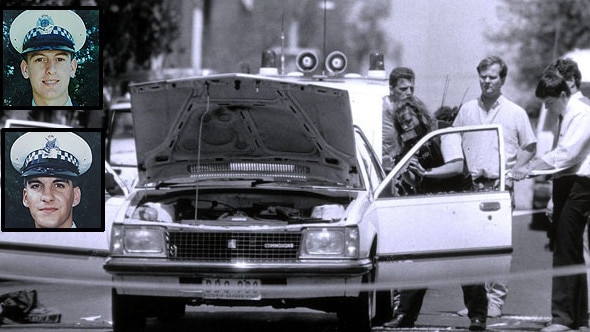
Victoria Police constables Steven Tynan, 22, and Damian Eyre, 20 were responding to a report of an abandoned car when they were gunned down in Walsh Street, South Yarra just before 5am on October 12 1988.
A massive investigation was launched which focused on a gang of bank robbers known as the ‘Flemington Crew’.
Investigators believed Tynan and Eyre were ambushed by the members of the gang who wanted appraisal for other shootings.
Melbourne crime figure Victor Peirce’s best friend, Graeme Jensen, was fatally shot by police in Narre Warren the day before the Walsh St killings.
Peirce, Trevor Pettingill, Anthony Leigh Farrell and Peter David McEvoy, were charged with murder but later acquitted by a Supreme Court jury.
Two other suspects, Jedd Houghton and Gary Abdallah, were shot and killed by Victoria Police before being brought to trial.
LINTON BUSHFIRES
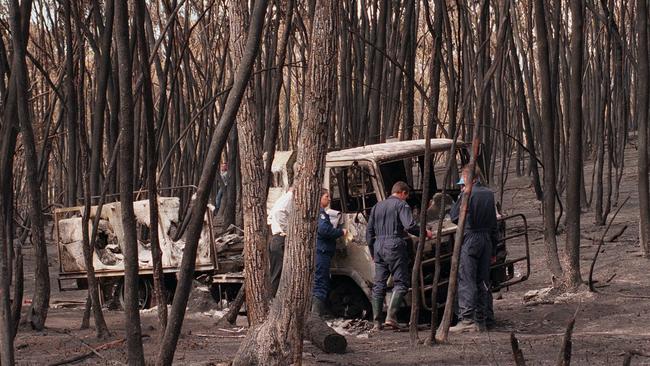
Five volunteer firefighters were killed after a fire ignited at Linton, southwest of Ballarat, on December 2, 1998.
The firefighters, all from Geelong West, were killed after their truck was engulfed by flames.
The crew got stuck after winds suddenly shifted the fire in the direction of the firefighters.
The bushfire covered a 660 hectares of land including the part of the forest at the Enfield State Park.
LUKE BATTY MURDER
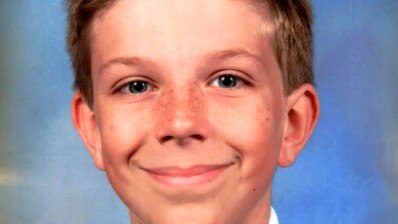
The murder of Luke Batty at Tyabb Cricket Club on February 12, 2014, by his dad Greg Anderson, shocked Australia.
In the years since, his mother Rosie Batty has spearheaded a drive to combat family violence.
Luke was killed in the cricket nets at Tyabb by his father just before 6.30pm.
Anderson was shot by police about 25 minutes later when he lunged with a knife at an officer.
He was flown to The Alfred hospital and pronounced dead at 1.25am after emergency surgery failed to save him.
Ms Batty, who was named Australian of the Year in 2015, has worked tirelessly in the past years to shine a light on family violence.
“The degree of change and reform which is happening here in Victoria is amazing,” she said. “It is not easy implementing all of the changes. We all look for a miracle to occur and don’t always understand how long change takes.”
THE WINCHELSEA DAM MURDERS

Robert Farquharson is serving three life terms for murdering sons Jai, 10, Tyler, 7, and Bailey, 2.
They drowned after his car went into a dam at Winchelsea on Father’s Day 2005 in what prosecutors claimed was a horrific act of revenge against his ex-wife.
The chilling murders still haunt the town to this day.
Farquharson made many appeals but his final legal avenue expired in 2013.
THE DARCEY FREEMAN TRAGEDY

On January 29, 2009, Arthur Freeman pulled over atop the Westgate bridge with his daughter Darcey, 4, and two sons, aged 6 and 2 in the car.
Freeman took Darcey from the car, carried her to the railing and dropped her over the edge.
“He put both his arms on the railing, looked over the side of the railing for a couple of seconds, then just casually walked back (to his vehicle),” one witness later said.
Not only did the crime shake Melbourne’s west, it shook the world.
Freeman contested a charge of murder on the ground of mental impairment, but a jury found him guilty.
He was sentenced to life imprisonment with a non-parole period of 32 years.
DEATH OF THE ‘BLACK PRINCE OF LYGON STREET’
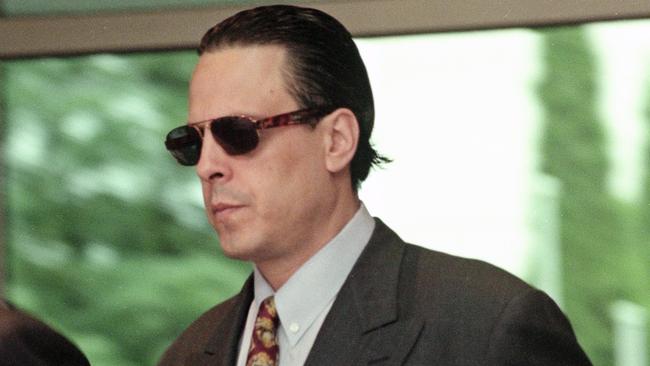
Murdered Melbourne gangster Alphonse Gangitano was gunned down at his Templestowe home on January 16, 1998.
Gangitano’s murder remains unsolved but a coroner did find Jason Moran and former career criminal Graham Kinniburgh (see below) were at Gangitano’s home the night he was killed.
The death of Gangitano – nicknamed the ‘Black Prince of Lygon Street’ – kicked off dozens of reprisal attacks throughout Melbourne.
The murder was also the first high-profile slaying in the long running Gangland War.
THE MUNSTER BUYS IT
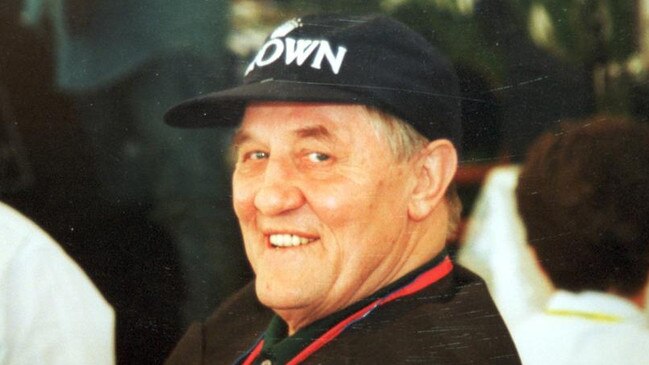
Career criminal Graham ‘The Munster’ Kinniburgh loomed large in Melbourne’s underworld for several decades until he was clipped outside his Kew home on December 13, 2003.
Kinniburgh, who was associated with the Painters and Dockers Union, was an associate of the Morans.
Kinniburgh’s murder was one of the most high profile hits in the midst of the Gangland War.
‘NIK THE RUSSIAN’ GUNNED DOWN
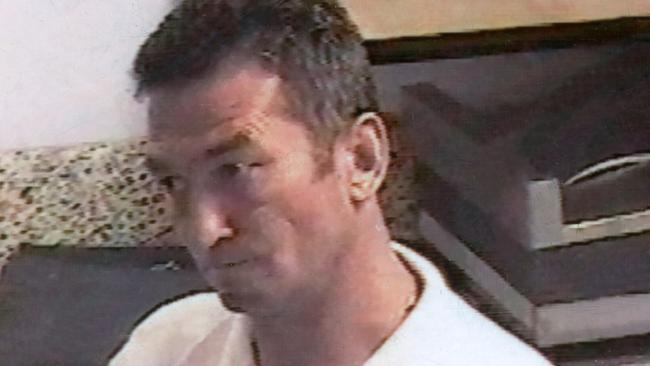
Slain drug dealer and underworld enforcer Nikolai ‘The Russian’ Radev was gunned down at Queen St, Coburg on April 15, 2003.
Radev, who was shot seven times after exiting his Mercedes, did jail time for blackmail, extortion, and assault.
The killing was witnessed by Radev’s associates but remains unsolved.
JASON MORAN ASSASSINATION

Melbourne’s Gangland War was well underway before Jason Moran was shot dead but his very public execution catapulted the city’s criminal underbelly well and truly into the spotlight.
Moran and associate Pasquale Barbaro were gunned down at Cross Keys Reserve in Essendon on 21, 2003.
The pair, who had been watching Moran’s young children play football, were killed in front of many other parents and children.
The brazenness of the murders committed by a lone gunman shocked Melbourne’s wider community and kickstarted mass media coverage which still continues to this day.
ANDREW ‘BENJI’ VENIAMIN DEATH

Gangland hit man Andrew ‘Benji’ Veniamin was virtually unheard of outside of criminal circles until his very public death in the midst of the Gangland War.
Veniamin was shot and killed at Carlton restaurant La Porcella on March 23, 2004.
After the shooting it emerged Veniamin was a close associate of slain crime boss Carl Williams who rushed to the scene.
Veniamin, who became a household name after his death, was suspected of multiple gangland killings.
Melbourne identity Mick Gatto was found not guilty of Veniamin’s murder on self-defence grounds.
LEWIS MORAN SLAYING
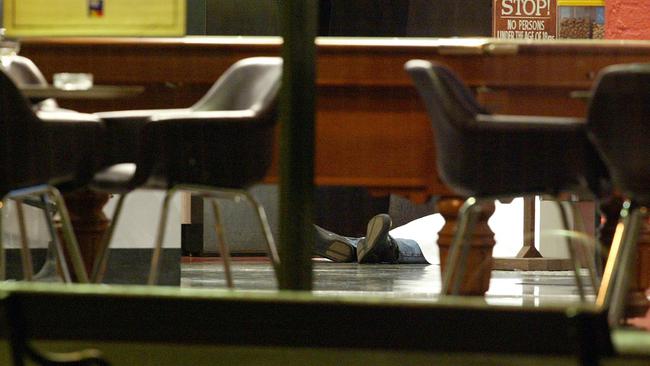
Barely a week after Benji was clipped Melbourne crime patriarch Lewis Moran was shot and killed while drinking at his favourite pub The Brunswick Club Hotel.
Moran, father of Jason and slain criminal Mark, was executed at the Sydney Rd pub on the evening of March 31, 2004.
Herbert “Bertie” Wrout, who had been drinking with Moran at the time, was also shot but did not die.
Crime boss Carl Williams, still reeling over the death of his good mate Veniamin, was later found to have arranged the hits on Lewis and Jason as well as other murder victims.
JILL MEAGHER TRAGEDY
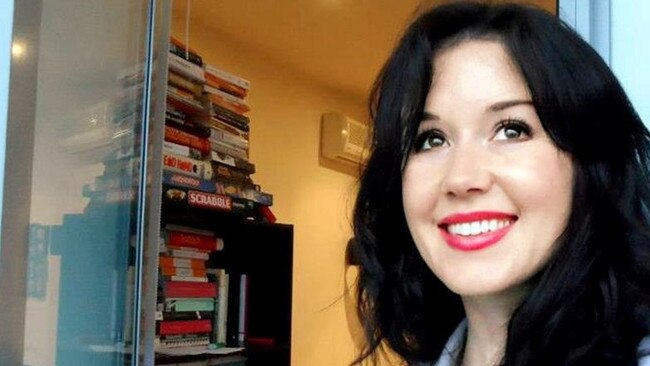
When Jill Meagher went missing after a night out a Brunswick bar in the early hours of September 22, 2012 it captured the attention of the entire country.
A statewide search for the adored ABC employee was conducted but sadly Ms Meagher was already dead.
She was raped and murdered at the hands of a horrible criminal who had raped many women previously.
Ms Meagher’s body was recovered in a shallow grave at Gisborne South almost a week later after her depraved killer informed police where he buried his victim.
A massive march to raise awareness of violence against women was staged along Sydney Rd near where Ms Meagher was murdered.
MURDER OF EURYDICE DIXON
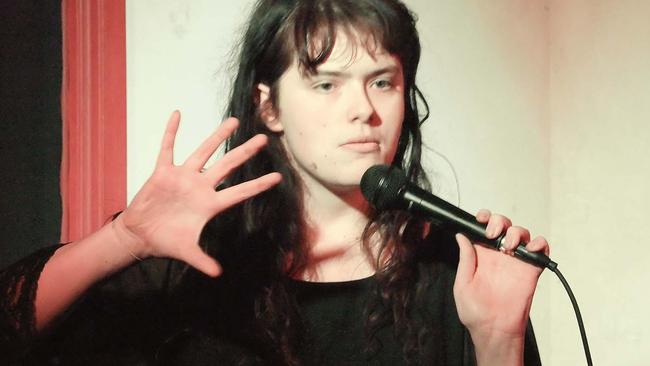
Budding comedian Eurydice Dixon was found murdered at Princes Park Carlton early on June 13, 2018.
Ms Dixon had been walking home from a performance at Highlander Bar the night before when she was attacked and murdered by 19-year-old Broadmeadows man Jaymes Todd.
Todd, who later pleaded guilty to rape and murder, handed himself into police after CCTV footage was released during a statewide manhunt.
Ms Dixon’s murder attracted mass media coverage and she tributes from fellow comedians Julia Morris, Paula Ferrari, Alex Lee and Jane Kennedy among many others.
A vigil held at the Princes Park soccer ground where Ms Dixon was killed was held on June 18.
More than 10,000 attended the vigil including Daniel Andrews and then Prime Minister Malcolm Turnbull.
MASA VUKOTIC’S SENSELESS DEATH
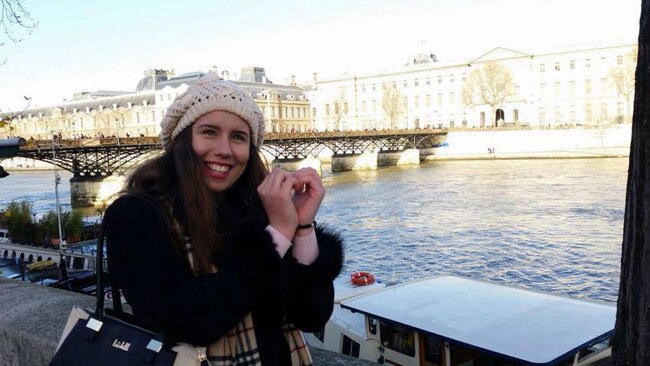
Canterbury Girls’ Secondary College student Masa Vukotic, 17 was stabbed multiple times and senselessly murdered while she walked along the Kooyung Creek Trail in Doncaster on March 2017.
Her crazed killer had been released back into the community after a stint in jail.
The maniac decided to kill Miss Vukotic after he saw walking along and talking to birds.
A vigil for the murdered schoolgirl held at the park where she was killed was attended by hundreds of people.
Ms Vukotic’s killer was captured and later sentenced to life imprisonment.
AYA MAASARWE KILLED AT THE HANDS OF A MONSTER
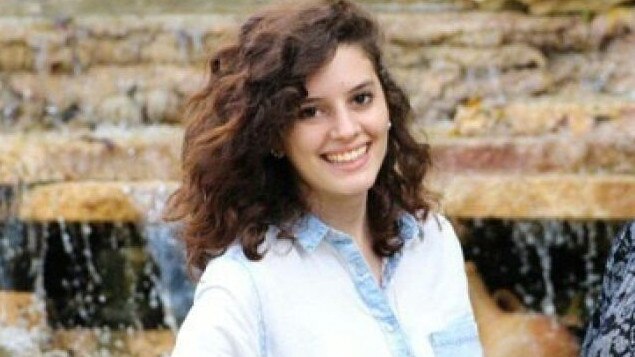
Palestinian international student Aya Maasarwe, 21, was found dead near a Bundoora tram stop early on January 16, 2019.
Ms Maasarwe was killed just after midnight the night before but her body was found in bushes near the Polaris shopping centre hours later.
The murdered student had just returned from a comedy gig and was on the phone with her sister just before she was killed.
Police arrested and charged vagrant Codey Herrmann with rape and murder and he was later sentenced to a 36-year jail term.
Ms Maasarwe’s family returned her body home and she was buried in her home town of Baqa al-Gharbiyye in Israel.
QUEEN STREET SHOOTINGS
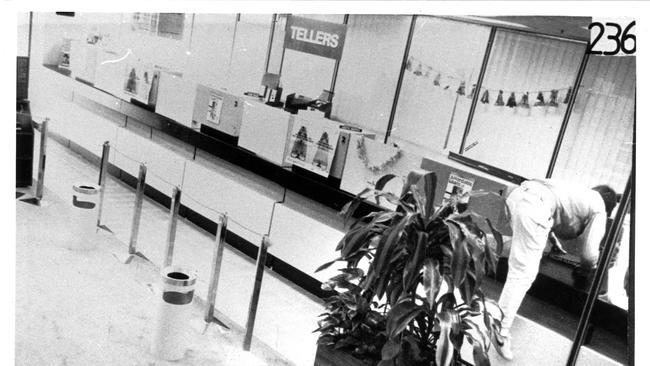
It’s been 35 years since troubled loner Frank Vitkovic shot dead eight people before plunging 10 floors to his death in the middle of Melbourne’s CBD.
On December 8, 1987 the 22-year old walked into the Australia Post building on Queen Street with a sawn-off rifle and an evil plan to kill his former school mate, Con Margelis.
When Margelis managed to get away, Vitkovic turned his murderous intentions to innocent office workers in the building.
His rampage began with the death of Judith Morris and continued on the 11th and 12th floors where he shot dead Nancy Avignone, Rodney Brown, Catherine Dowling, Julie McBean, Michael McGuire, Marianne Van Ewyk and David Spencer.
The Melbourne University drop out may have kept killing were it not for the heroic actions of Tony Gioia and Frank Carmody.
Mr Giois grabbed Vitkovic in a bear hug and Mr Carmody, who had been shot four times, managed to wrestle the gun away.
The men continued to try and contain Vitkovic but he managed to throw himself out off a broken window where he fell 10 storeys to his death.
Mr Gioia and Mr Carmody were both recognised for their bravery with medals.
HORROR ON HODDLE STREET
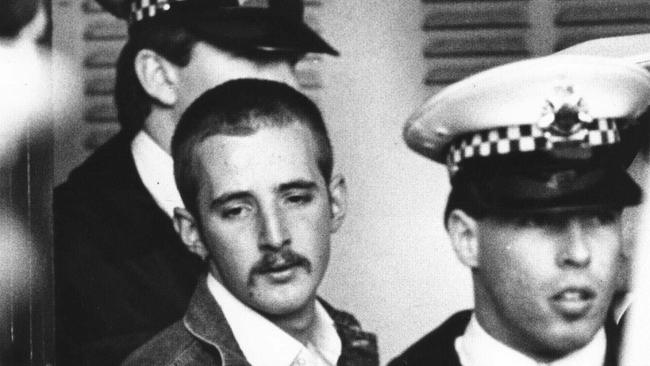
Mass murderer Julian Knight was just 19 when he killed seven and wounded 19 more during a shooting spree on Hoddle Street in Clifton Hill.
The evil killer will spend the rest of his life in jail after a 2017 High Court ruling that he would not be released unless he was “incapacitated or near death”.
Knight was initially sentenced to 27 years after his heinous acts on August 9, 1987.
The army reject and gun nut began randomly shooting at motorists and pedestrians on a street that used to be known only for traffic jams.
He killed Gina Papaioannou, 21, Kenneth Stanton, 21, Tracey Skinner, 23, Vesna Markovska, 24, Johnny Muscat, 26, Robert Mitchell, 27 and Dusan Flajnik, 53.
Knight later said the shootings fulfilled a long-held ambition to “feel what it would be like to kill someone’’.
BOURKE STREET MASSACRE

James Gargasoulas was sentenced to life in prison for killing six people in a “callous and cowardly” driving rampage through the city.
Gargasoulas used a stolen Holden Commodore to mow down his victims in Bourke Street mall on January 20, 2017. They included three-month-old Zachary Bryant who was thrown 60m from his pram and 10-year-old girl Thalia Hakin, who was holding her mum’s hand when she was struck.
Dozens more were injured in the attack.
Dressed in a neat white shirt for his sentencing in the Supreme Court in 2019, the mass murderer barely shifted in his seat as a judge detailed how a litany of violence, drug abuse and mental instability created the framework for a single act of terror that changed the lives of hundreds of Australians.
RUSSELL STREET BOMBING
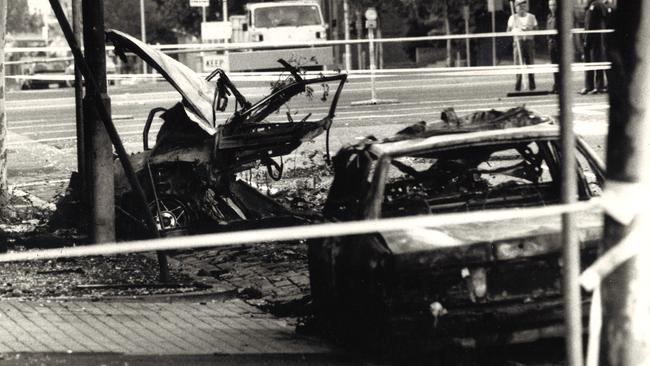
The explosion outside the Russell St police station on March 27 1986 constituted one of the most serious attacks on police and authority in the state’s history.
Constable Angela Taylor, 21, died three weeks after the massive car bomb was detonated and two others, Magistrate Iain West and Constable Carl Donadio were seriously injured in the bombing. It was around 1pm, as people from the surrounding buildings were heading off to lunch, when the bomb was set of.
The explosives had been placed in a stolen car that was parked at the kerb directly in front of the police complex, opposite the Melbourne Magistrates Court.
A series of raids and tip-offs led police to arrest Stanley Brian Taylor, Craig Minogue and several other men two months later.
In July 1988, Taylor, 50, of Birchip was found guilty along with accomplice Minogue, 25, also of Birchip.
Justice Frank Vincent handed down one of the toughest sentences since the abolition of capital punishment.
Taylor was hit with a life sentence with no minimum term, and Minogue was given life with a minimum of 28 years.
BOURKE STREET TERROR ATTACK
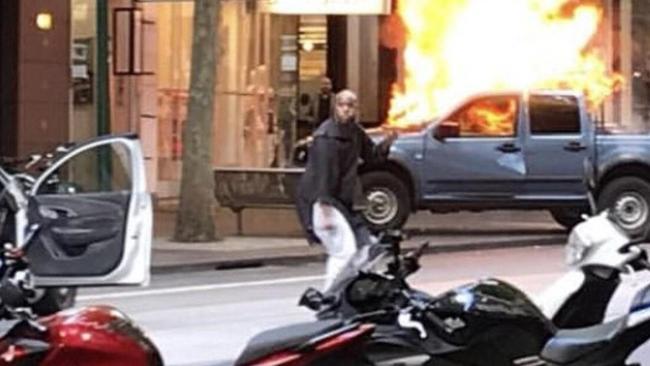
Melburnians were plunged into mourning after the shock loss of Pellegrini’s icon Sisto Malaspina in a horror Bourke St terror attack on November 9, 2018.
A former nurse who desperately tried to revive Mr Malaspina after he was attacked by a crazed terrorist revealed the tragic final moments of the iconic Melbourne restaurateur’s life.
The single mum performed CPR on Mr Malaspina after she saw him fall to the ground near the corner of Russell Place and Bourke St.
But the stab wound, just above his collarbone, had punctured a major artery, causing him to lose blood too quickly, the former trainee nurse said.
The cafe owner was just a few hundred metres from his restaurant when terrorist Hassan Khalif Shire Ali, 30, blew up his Holden Rodeo ute in Bourke St.
The terrorist also stabbed Rod Patterson, 58, in the head after he went to help a victim, and a 24-year-old Hampton Park security guard.
Hassan Khalif Shire Ali was shot dead by police after he killed Mr Malaspina.
FLINDERS STREET ATTACK

A treasured father was killed and 16 people were injured when driver Saeed Noori accelerated through a crowd of pedestrians at the busy Flinders St and Elizabeth St junction on December 21, 2017.
A court heard Noori screamed ‘Allahu Akbar’ as he mowed through the pedestrians.
Antonios “Anton” Crocaris, 83, died after being caught in Noori’s path.
Noori was jailed for life over the attack, but could be eligible for parole after 30 years.
Noori had told his mum he needed to borrow her car to go to the doctors.
But instead he drove straight into the CBD, where CCTV footage captured him stop his vehicle at the red light along Flinders St and wait as the pedestrians started crossing, before accelerating at up to 52km/h into the crowd.
BLACK SATURDAY BUSHFIRES
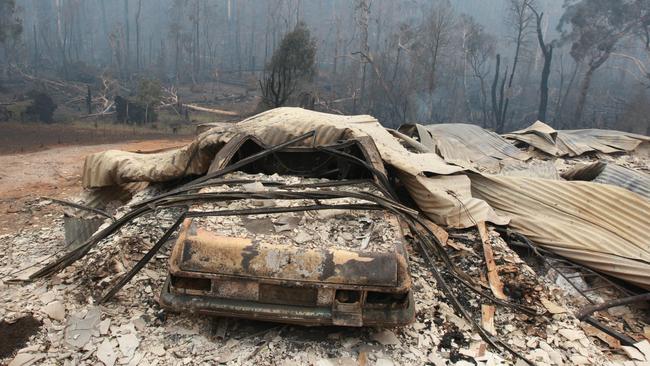
More than 170 people died and entire towns were decimated in the Black Saturday bushfires throughout Victoria on February 7, 2009.
On a scorching day with unprecedented north westerly winds, the devastating fire began through sparks brought down by powerlines in Kilmore East just before noon.
By the evening, as many as 400 individual fires were burning across the state.
A total of 173 people died, 414 people were injured, and more than a million animals perished.
More than 4500sq km was burnt, and over 3500 buildings, including more than 2000 houses were destroyed.
Among the worst impacted areas was the Kinglake National Park, due to a fire front which merged from Kilmore East and Murrundindi.
Townships including Kinglake and Marysville were reduced mostly to rubble.
ASH WEDNESDAY FIRES
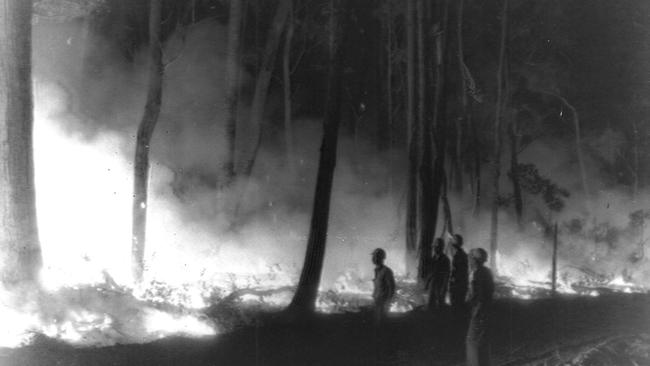
A dry summer and intense winds led to more than 100 fires sweeping across Victoria and South Australia on February 16, 1983, known as Ash Wednesday.
In Victoria, two fires at Ballageich and Cudgee joined forces and created a fire front stretching more than 40km.
Fires also ripped through the Otway Forest and the Dandenong Ranges, destroying townships along the Great Ocean Road and in Melbourne’s hills.
In Victoria, 47 people died, more than 2000 homes were destroyed and scores of businesses, machinery and livestock were also burnt to the ground.
The toll included 12 volunteer firefighters trapped by a wall of flames when the fire spread to Cockatoo and Upper Beaconsfield.
KERANG RAIL DISASTER
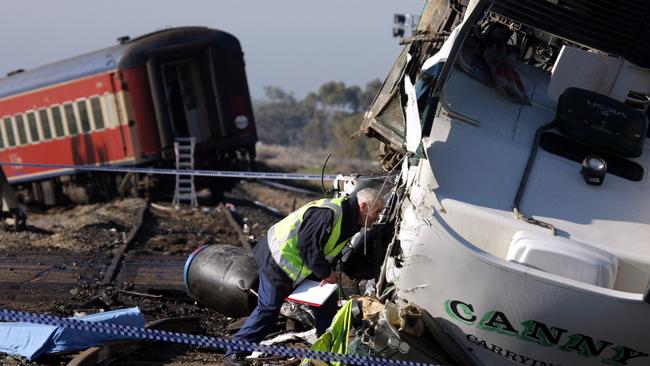
Eleven people were killed and 23 people were injured after a truck collided with a Melbourne-bound V-Line train, 6km outside of Kerang in the state’s north west.
The truck collided with the train from Swan Hill at a level crossing on the Murray Valley Hwy at 1.40pm on June 5, 2007.
It was one of the deadliest rail incidents in Victoria’s history, and a coroner’s inquest led to a raft of recommendations to improve the safety of trains, trucks and level crossings.
The driver of the truck, Wangaratta man Christian Scholl, survived the crash and was acquitted of all charges two years later following an inquest.
THE WESTGATE BRIDGE COLLAPSE
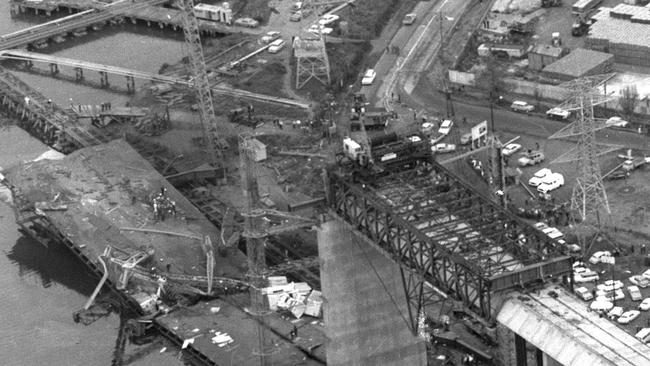
Regarded as the state’s worst industrial accident, a 112m section of the West Gate Bridge collapsed into the Yarra River as it was nearing completion on October 15, 1970.
Thirty-five people were killed in the disaster, many of whom were workers who were on lunch breaks in huts underneath, and another 18 people were injured.
The 2200 tonne section of the bridge fell 50m to the ground, and its impact was felt up to 20km away with houses being splattered with mud, buildings being shaken and gas explosions.
The bridge was eventually reconstructed eight years later and completed in 1978.
EASEY STREET MURDERS
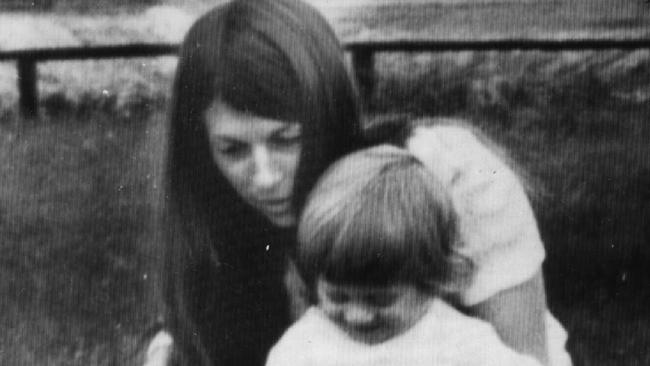
The brutal murders that took place at 147 Easey St, Collingwood, remain unsolved 45 years later.
Schoolteacher Susan Bartlett, 28, and her friend Suzanne Armstrong, a single mum aged 27, were found in pools of blood after they were both stabbed repeatedly in 1977.
Neighbours discovered the gruesome scene two days later after they heard Ms Armstrong’s baby son, Gregory, crying.
Police described the crime as one of the most frenzied and baffling in Victoria’s history.
Ms Bartlett was found lying face down in the hallway with 55 stab wounds and Ms Armstrong had been stabbed 25 times.
A $1m reward was announced in 2017 to for help to solve murders.
KARMEIN CHAN’S UNSOLVED MURDER
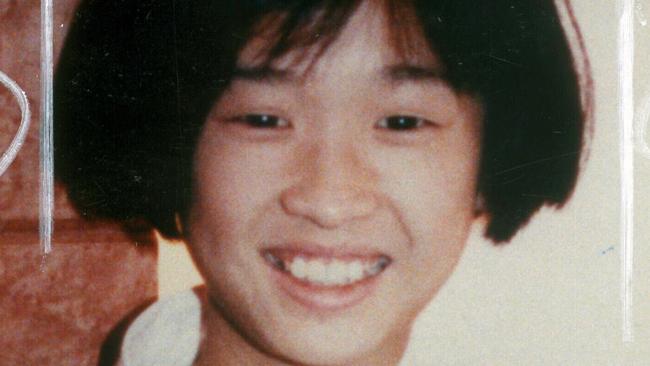
Victoria Police used the 25th anniversary of the abduction of schoolgirl Karmein Chan to increase the reward in the case to $1m in 2016.
Police believe Karmein, 13, was taken from her Templestowe home about 8.40pm on April 13, 1991, by an unidentified man the media dubbed Mr Cruel.
Karmein’s disappearance sparked widespread attention and captured the hearts of Victorians.
Her body was found in a shallow grave near Edgars Creek at Thomastown just under a year later.
An autopsy revealed she had been shot at least three times in the head.
Despite the reward, no arrest has been made in relation to Karmein’s murder.
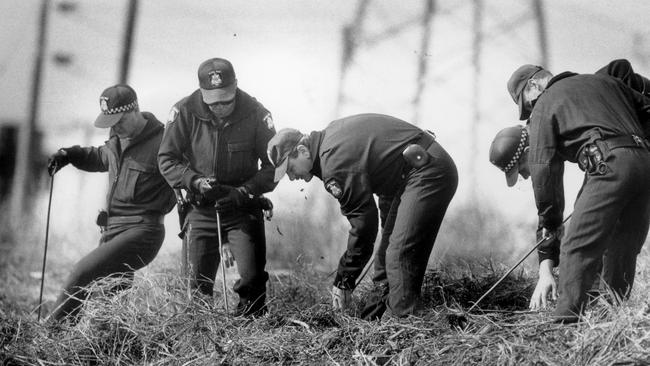
BUNG SIRIBOON’S DISAPPEARANCE
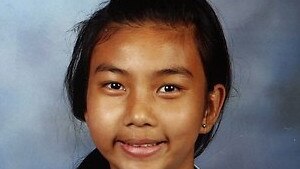
Homicide investigators say they have not given up on solving the mystery of missing schoolgirl Siriyakorn “Bung” Siriboon.
Police made the announcement in June last year, which marked the 10-year anniversary of the disappearance and suspected murder of Bung.
Bung left her family’s Elsie St, Boronia, home at 8.30am on June 2, 2011 to walk to school.
A witness saw the 13-year-old walking towards Albert Ave but she was never seen again.
Detective leading Senior Constable Justin Tippett of the homicide squad said police still held out hope of solving the case and urged anyone with information to come forward.
He said information continued to surface on a weekly basis, via phone calls and emails.
“We continue to encourage people to come forward with new information that may assist police and can assure the community that all credible information will be thoroughly assessed,” he said.
ROSEMARIA LAURIA’S GHASTLY MURDER
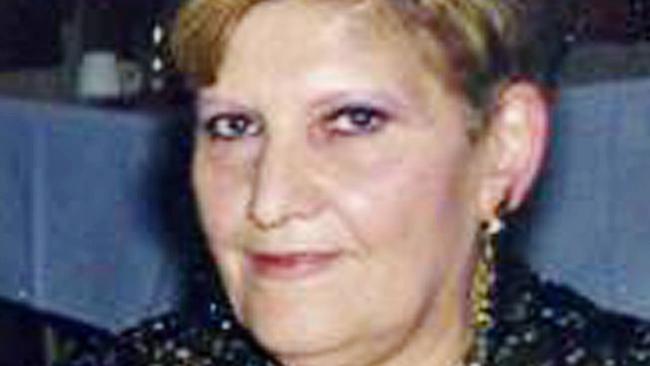
Pensioner Rosemaria Lauria, 69, was set on fire in scrub at Kananook Creek Reserve near the Frankston foreshore.
Firefighters discovered Ms Lauria’s charred body at 7pm on Monday, October 9, 2006.
It is thought she was still alive when she was torched near a path near Wells St.
Police said she could have died of smoke inhalation or toxic fumes from her burning clothes.
Police said several people were probably at the Frankston foreshore at the time of the macabre killing.
The Brunswick woman vanished from her Inverness St flat at 2pm on day she died.
She had told her sister she was going out to do some shopping in Coburg.
It is thought she caught a train to Frankston, despite having no links to the area.
DNA tests and dental records weeks after the murder confirmed her identity.
In 2017, police announced a $1m reward to solve the murder.
JANE THURGOOD-DOVE MYSTERY
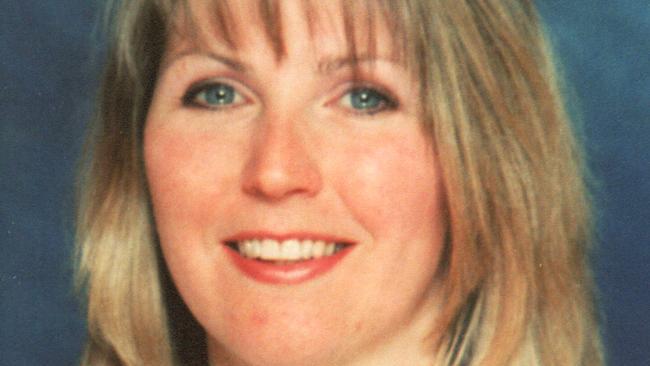
Melbourne mum Jane Thurgood-Dove was gunned down outside her Niddrie home on Oaks Day 1997.
However, Jane’s sad case remains unsolved despite police having strong suspicions on who killed her.
Jane, 35, stood no chance when a pot-bellied hit man took aim and shot her in front of her three children in the driveway of their Muriel St home.
The Commodore used in the execution was torched in nearby Farrell St and the gunman and getaway driver took off in another vehicle.
Among the strongest early lines of investigation was that the real target was the wife of a man who lived further along Muriel St.
One attempt had already been made on the life of the convicted criminal and he was known to be in fear of another attack.

JAIDYN LESKIE TRAGEDY
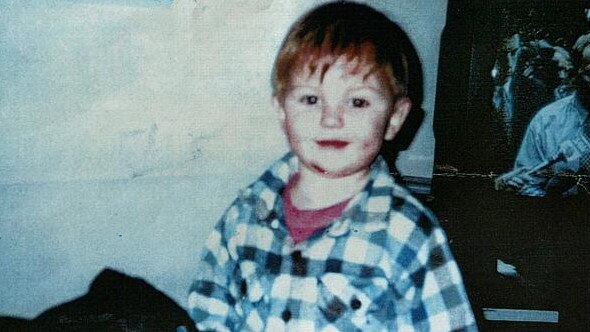
Moe toddler Jaidyn Leskie’s brutal murder remains unsolved.
Jaidyn vanished from the home of his babysitter, Greg Domaszewicz, then-boyfriend of his mother, Bilynda Murphy in June 1997.
The statewide manhunt drew massive media coverage and captured the hearts of people Australia-wide.
Little Jaidyn’s body was later found wrapped in a sleeping bag and weighed down by a crowbar, in Blue Rock Dam, 18 km north of Moe on January 1, 1998.
Mr Domaszewicz was later acquitted of the toddler’s murder.
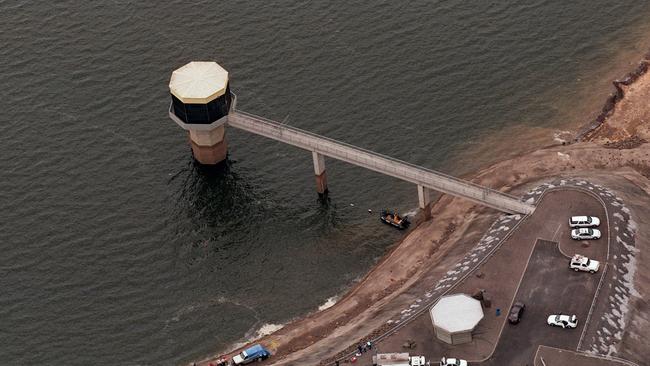
Mr Domaszewicz insisted he left the boy sleeping before going to pick up Jaidyn’s mother at a Traralgon pub.
Mr Domaszewicz was acquitted of murdering the toddler but the State Coroner found in 2006 that he was the one who threw Jaidyn into the dam.
Mr Domaszewicz was the last person to see Jaidyn alive and his money and wallet were wet, consistent, the Coroner said, with him walking into the dam to dispose of the body.




